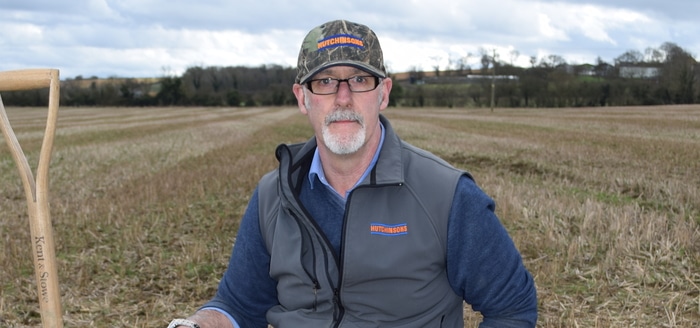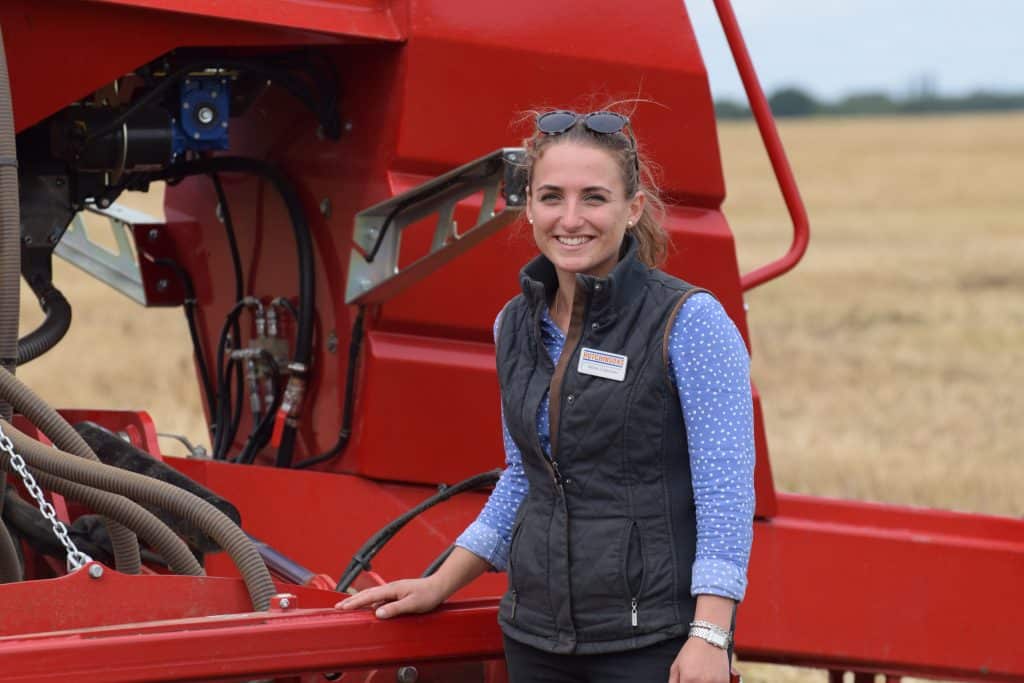Take a ‘light touch’ to post-harvest cultivations for soil health – Farmers Guide – Dick Neale, Alice Cannon
As harvest approaches and thoughts turn to preparing ground for next season, many growers will be eager to get on with cultivations and drilling ...
To avoid any potential repeat of last year’s rain-disrupted programme.
However, before rushing in behind the combine with the plough, subsoiler or other deep cultivations, Hutchinsons’ Dick Neale urges caution and patience, as he believes, in many cases, intense tillage can be unnecessary and potentially damaging to soil health.
Generally “less is more” when it comes to cultivations, although he acknowledges there may be situations where some targeted remedial action is required.

Dick Neale, Technical Manager
“The first thing you’ve got to do is identify the issue,” says Mr Neale. “The vast majority of soil inspections we’ve done this year show 90 per cent of soil water management issues are focused on the top 100–125mm of soil, not the lower profile.
“That means, in many cases where waterlogging was seen last autumn/winter, it was an infiltration issue – not compaction – which is not going to be addressed by deep subsoiling or mole ploughing this autumn.”
Fields should be individually assessed to determine soil status and cultivation requirements, ideally where there is adequate moisture, as very dry soil can appear hard and compacted when it is simply due to lack of water, he advises.
Improve aggregate structure
Improving the stability of soil aggregates is fundamental to long-term soil health and should drive cultivation decisions this autumn, Mr Neale continues.
A useful starting point is to conduct a simple slake test to determine how well soil currently maintains its structure to provide water and air for plants. This involves taking a handful-size sample of topsoil and submerging it in a jar of water to see whether the soil holds together (good structure) or disintegrates (poor structure). A cradle of wire mesh can be moulded to hook over the jar and suspend the soil in the water.
Roots – both growing and from previous crops – are central to improving aggregate stability, porosity, and feeding earthworms and other soil biology, so growers should aim to leave as many intact as possible, says Mr Neale.
This means avoiding deep cultivations, unless absolutely necessary, and instead focusing on cultivating the top 50-75mm, to create a tilth that allows good seed-to-soil contact and therefore strong crop establishment. Doing so also has knock-on benefits for grassweed competition and soil conditioning.
“You don’t need to move all of the soil and turn the field brown with one or two passes; there should be some stubble on the surface.
“Direct drilling may be an option if you’ve got the soil structure for it to work successfully, but equally, a light, shallow cultivation to create a nice tilth can be very beneficial to crop establishment.”
With cash crops in the ground for most of the year, good establishment is vital for yield optimisation and maximising the benefits that extensive crop rooting brings to soil structure, he notes.
Cultivation timing also makes a difference, as creating a fine seedbed too far in advance of sowing, means weathering of bare soil could cause slumping and capping. If not using catch/cover crops, shallow tillage or direct drilling, he suggests cultivations should therefore be timed closer to drilling, providing a good seedbed can be created.
Cover crops
Overwinter cover crops, or catch crops grown between harvest and an autumn-sown crop, are an excellent way of providing extra root mass and improving soil structure during periods when the soil would otherwise be bare, says Mr Neale.
Hutchinsons offers a range of multi-species mixes to suit different situations, with most in the ground for 8-16 weeks.
“They’re all small seed for accurate application through a drill or seeder unit, and are cereal-free because volunteers already exist from previous wheat, barley or oat stubbles.”
Seed rate as insurance policy
Last autumn’s challenging conditions highlighted the benefits of using higher seed rates to compensate for lower establishment, so it is something growers should consider this year.
The key is to be realistic about likely crop establishment, depending on soil conditions, seedbed quality, drilling date and weather at the time.
Seed is generally one of the cheaper crop inputs, so increasing rates could be a good insurance policy that has a big impact on plant count, green area index and yield potential, says agronomist Alice Cannon.
Seed rate trials at the Grayingham Regional Technology Centre in Lincolnshire this year show a noticeable benefit to plant count and the number of ears per sq.m from higher seed rates (450 seeds/m2), she notes.

Alice Cannon, agronomist
There also appears to be a benefit from using wider row spacings (25cm versus 12.5cm) by giving plants more space to tiller. However, she acknowledges this effect can vary according to soil type and variety’s tillering capacity.
Wider row widths appear to be more effective on heavier-bodied soils, which have better capacity to support the extra biomass. In contrast, narrower rows appear more effective on lighter land, although work is ongoing and more detailed results will be available after harvest.
Key things to look for include:
What does the crop tell you? Is it a uniform colour with even growth, or are there stressed, thin or patchy areas?
Has the surface layer slumped or capped preventing water infiltration?
Has cracking of clay soils during dry weather naturally improved capped or compacted layers?
Are roots growing freely through the profile, or are they restricted anywhere?
Are there signs of worm activity and is there a good mix of different species?
Is any compaction evident? How deep is it? How widespread is it?
Where is the soil wet or dry? Is moisture sitting in certain layers, or evenly distributed?
Use the slake test to see how well soil holds together
Are there any obvious issues?